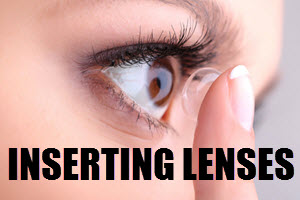Myopia, commonly known as nearsightedness or shortsightedness, is a prevalent vision condition that affects millions of people worldwide. An affected person will see near objects clearly while far objects appear blurry. As a widespread vision problem, understanding its causes, symptoms, and possible management strategies is vital.
The prevalence of myopia is higher in some parts of the world. In some Asian countries, the prevalence is reportedly above 70%, while the reported prevalence in certain African countries is just 10-20%. Singapore is one of the countries with the highest prevalence of myopia – up to 80% of Singaporians are myopic. Europe and the United States fall between these extremes, with a reported prevalence in the 30-40% range. In the United States, myopia is less common among African Americans than Caucasians in the 12-54 age range.

Causes of Myopia
Several factors can contribute to the development of myopia. One of the primary causes is the elongation of the eyeball, which results in light focusing in front of the retina instead of directly on it. Genetics play a significant role, with research suggesting that myopia is hereditary; if one or both parents are myopic, the chances of their children developing the condition increase significantly.
In childhood, myopia is more freuqent in children who have certain other conditions, e.g. diabetes, systemic lupus erythematosus, childhood arthritis, or uveitis (inflammation of the uvea).
Prevention
While it may not be possible to prevent myopia caused by genetic factors, certain strategies can help manage the condition and prevent it from worsening. These involve taking regular breaks during near work and ensuring good lighting when reading or writing. Regular eye examinations are also essential in effective management of myopia.
Interesting data from Taiwan point to a connection between spending a lot of time indoors and becoming nearsighted. When the Taiwan military noticed a staggering increase in the number of young military recruits that required glasses, the authorities acted and schools were obliged to give their pupils small breaks after reading. After 30 minutes of reading, the pupils were given a 10 minute break. This did not help and the rate of myopia continued to rise. A new policy was then employed and it proved effective; the schools were ordered to let the children be outdoors for at least 80 minutes each school day. Building on these finds, Taiwan is now employing an even stronger program to prevent myopia and the Tian-tian 120 program encourages children to have at least two hours of outdoor time every day. (Taiwan is also working harder to identify pre-school-age children with myopia and treat them with atropine.)
Symptoms of Myopia
Myopia primarily manifests through difficulty in seeing distant objects clearly. This is often noticed in school-aged children who struggle to read from the chalkboard, but can see their books without any difficulty. Other symptoms include squinting, excessive blinking, and eye strain. Tension headaches can develop as result of non-treated myopia.
Diagnosis
Proper diagnosis of myopia requires professional eye exams. These involve tests to assess how the eyes focus light and measure their ability to see details at a distance. Once diagnosed, a range of treatment options are available depending on the severity of the condition.
Management
Glasses and contact lenses are the most common corrective measures for myopia. They function by changing the way light enters the eyes, allowing it to focus on the retina and improve distant vision. For people who prefer a more permanent solution, refractive surgery such as Lasik or PRK may be recommended. These procedures reshape the cornea, correcting the way the eye focuses light.
Final thoughts
Myopia can significantly affect an individual’s quality of life. Therefore, understanding its causes, symptoms, treatments, and prevention strategies is paramount for those affected by the condition and those at risk. Through professional eye care and adopting healthy eye habits, it is usually possible to manage myopia effectively.



 Cosmetic contact lenses
Cosmetic contact lenses